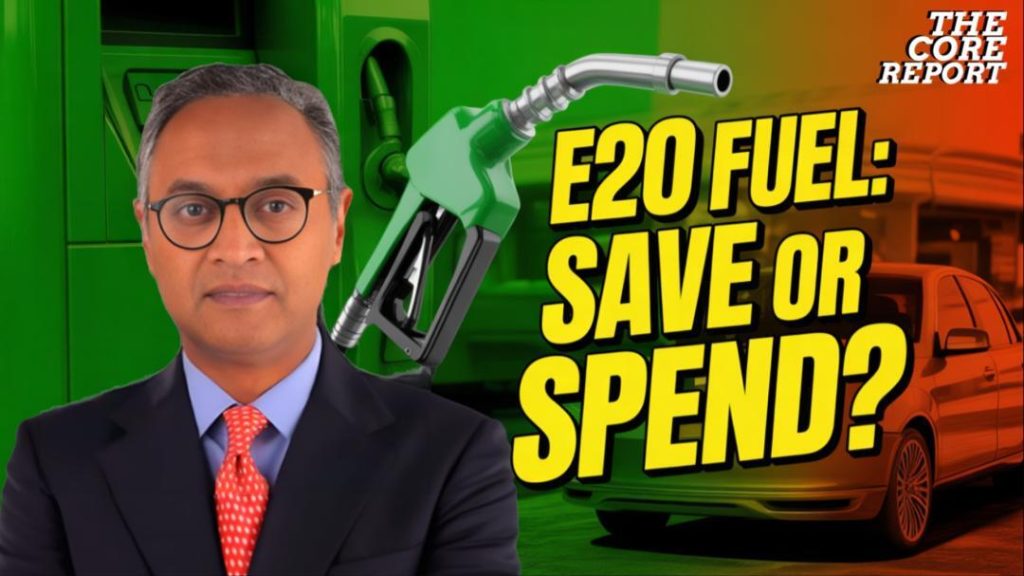
E20 Fuel in India: Benefits, Risks & What Vehicle Owners Must Know
As the world continues to grapple with the challenges of climate change, energy security, and economic sustainability, India has taken a significant step towards reducing its carbon footprint by introducing E20 fuel in the country. E20 is a blend of 20% ethanol and 80% petrol, which offers several benefits, including reduced greenhouse gas emissions, improved energy security, and support to farmers. In this blog post, we will delve into the benefits and risks associated with E20 fuel, and what vehicle owners must know to ensure a smooth transition.
Benefits of E20 Fuel
- Reduced Carbon Emissions: E20 fuel is a cleaner-burning fuel that emits fewer greenhouse gases, contributing to a reduction in carbon emissions. This is a significant step towards mitigating the impact of climate change, as India is one of the largest emitters of greenhouse gases.
- Improved Energy Security: E20 fuel is a domestic fuel source, as ethanol is produced from sugarcane and other biomass. This reduces India’s dependence on foreign oil and enhances energy security.
- Support to Farmers: The production of ethanol from sugarcane and other biomass provides a new market for farmers, generating additional income and promoting rural development.
- Boost to the Economy: The E20 fuel blend is expected to create new job opportunities, stimulate economic growth, and reduce the trade deficit.
Government Studies Report Improved Acceleration and Environmental Benefits
Recent studies conducted by the government have reported improved acceleration and environmental benefits of E20 fuel. The studies found that vehicles running on E20 fuel experienced:
- Improved acceleration, with some vehicles showing a 10% increase in acceleration time
- Reduced particulate matter emissions, resulting in cleaner air and improved air quality
- Reduced carbon monoxide emissions, contributing to a cleaner environment
Risks Associated with E20 Fuel
While E20 fuel offers several benefits, there are also some risks associated with its use. One of the primary concerns is the potential impact on older vehicles that are not designed to run on E20 fuel.
- Engine Wear: Older vehicles may experience engine wear and tear due to the use of E20 fuel, which can lead to higher maintenance costs and reduced vehicle lifespan.
- Fuel System Corrosion: The use of E20 fuel can cause corrosion in the fuel system of older vehicles, leading to costly repairs and potentially even engine damage.
- Mileage Loss: Vehicles running on E20 fuel may experience reduced mileage, as the fuel blend can be less efficient than traditional petrol.
What Vehicle Owners Must Know
To ensure a smooth transition to E20 fuel, vehicle owners must take steps to prepare their vehicles for the new fuel blend. Here are some tips:
- Check Your Vehicle’s Compatibility: Check your vehicle’s compatibility with E20 fuel. If your vehicle is not designed for E20 fuel, you may need to upgrade your vehicle or modify your fuel system.
- Use the Right Fuel: Use the right fuel for your vehicle. If your vehicle is not designed for E20 fuel, use traditional petrol to avoid any potential issues.
- Monitor Your Vehicle’s Performance: Monitor your vehicle’s performance after switching to E20 fuel. If you notice any issues, such as reduced acceleration or decreased mileage, consult a mechanic or the vehicle’s manufacturer.
By 2025, all new vehicles in India will be E20-compliant, easing adaptation concerns. This means that new vehicles will be designed and manufactured to run on E20 fuel, reducing the risk of engine wear, fuel system corrosion, and mileage loss.
Conclusion
E20 fuel in India is a significant step towards reducing carbon emissions, improving energy security, and supporting farmers. While there are some risks associated with its use, vehicle owners can take steps to prepare their vehicles and ensure a smooth transition. By 2025, all new vehicles will be E20-compliant, making it easier for vehicle owners to adapt to the new fuel blend.






